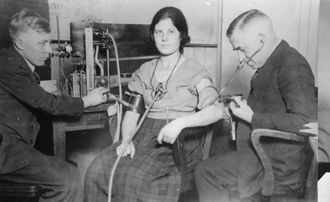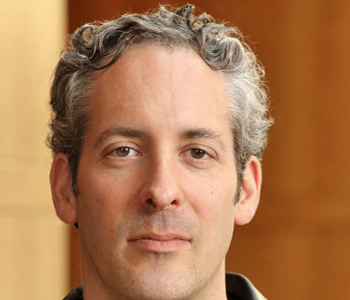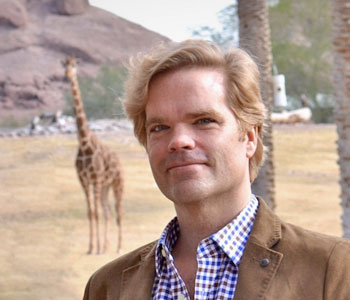Ken Alder
The Lie Detectors: The History of an American Obsession
Bison Books
368 pages, 9 x 6 inches
ISBN 978 0803224599
I did not write this book to “debunk” the lie detector. Eminent psychologists have been trying to do that for eighty years, ever since interrogators first re-purposed some basic physiological apparatus to measure subjects’ bodily responses—their blood pressure, pulse rate, breathing depth, and sweatiness—while obliging them to answer probing questions. Likewise, the U.S. courts have consistently refused to allow this sort of polygraph evidence into criminal trials. Yet the lie detector lives on. It is used in criminal investigations, to gauge loyalty in the workplace, to protect national security, and as a publicity stunt. At one point, Americans were turning to this mechanical oracle some two million times a year.
Why?
At the proximate level, the answer lies in the nation’s admirable effort to reform the police. The lie detector apparatus and questioning procedures were first assembled in the 1920s in Berkeley, California by two disciples of August Vollmer, the father of modern professional policing. Vollmer’s goal was to substitute this new and humane scientific technique for the traditional (and brutal) third-degree interrogations. They both shared Vollmer’s grand ambition of making the police themselves law-abiding, and soon turned the instrument against the police.
But Vollmer’s disciples differed as to how the lie detector was to be deployed in practice.
One, John Larson, was the nation’s first Ph.D. cop. He hoped to use the lie detector to probe the psyche of criminals and perhaps even create a therapeutic cure for deceit. The other, Leonarde Keeler, named after Leonardo da Vinci, but widely known as “Nard,” was a local high school kid and amateur magician who adapted the lie detector to get what cops and prosecutors had always wanted from suspects: confession. The two men started out as friends and wound up bitter enemies.
My book uses the diverging biographies of these two to address what it is about America that makes us take a Rube Goldberg approach to one of life’s most enduring mysteries: the hidden thoughts of another person.

I am particularly interested in the history of measurement, often considered one of our most banal and unproblematic activities. Yet to measure is to assign value. That is why the scale is an emblem of justice. Measuring is an intrinsically moral act.
I am a historian of science, but rather than focus on the achievements of great thinkers—Darwin’s theory of natural selection, say, or Einstein’s theory of relativity—I am interested in the science and technology of ordinary things.
I think that one of the most important public roles of the historian is to reveal how seemingly settled features of our contemporary world have emerged out of passionate debates whose outcome was by no means certain. Tracing these contingent pathways to the present can help us imagine how “things might be different.” For my part, I am particularly interested in the history of measurement, often considered one of our most banal and unproblematic activities. Yet to measure is to assign value. That is why the scale is an emblem of justice. Measuring is an intrinsically moral act.
My previous book, The Measure of All Things, traced the origins of the metric system, showing how the standardized measures shaped the way that ordinary people calculated their best interest in the marketplace, and how scientists themselves reconceived what it meant to err.
In The Lie Detectors I take on a technology closer to home. This technique—banal in its science, but fantastical in its claims—purports to assess a person’s veracity on the basis of bodily measurements so routine they can be turned over to a machine.
Turning the judgment of truth-telling over to a machine constituted the principal appeal of the technique in America. Like two other early-twentieth-century innovations of American applied psychology—the IQ test and Frederick Taylor’s program of scientific management—the lie detector promised to resolve one of our most contentious social problems by the application of disinterested science. But it is here that Larson and Keeler parted company—and where I distinguish between the formal ideals of justice and justice’s informal practices.
Keeler cultivated the façade that his subjects were being judged by his polygraph machine, a piece of hardware he had patented as the “first” lie detector. In practice, however, Keeler’s greatest innovation was the creation of a set of questioning techniques (call them the “software” of lie detection) that induced his subjects to confess, which was, after all, the only form of lie detector evidence allowed in court. (I detail some of these interrogation “tricks” in my book.)
Keeler’s techniques worked. In my research I uncovered surveys taken in the 1930s showing that Keeler and his disciples were able to get confession rates of 60 per cent when they accused subjects of lying. (Whether those confessions were true is another question.) In a sense, Keeler transformed the lie detector into a kind of technological placebo—effective largely to the extent it was believed.
The one exception in these surveys was the 6 per cent confession rate obtained by the Indiana State Police. Here, however, the examiner had been trained by Larson.
Unlike Keeler, John Larson ordered his disciples never to “bluff” confessions from their suspects. A noble sentiment, perhaps, but Keeler’s form of bluffing was more compatible with the form of plea-bargaining then becoming the norm in criminal justice. Today, the lie detector plays a hidden role in many of the 90 percent of criminal convictions resolved through plea bargaining. Behind its public façade of disinterestedness, American justice often plays out like a game of bluff and bluster—just like the lie detector.
Keeler went on in the 1930s to sell corporate managers on deploying this same game of bluff and bluster to gauge the loyalty of their employees. And in the 1940s he sold the U.S. government on the technique to vet workers in national security—including all 18,000 residents of Oak Ridge, Tennessee, the town where uranium was being processed for nuclear bombs.
In the McCarthy era, the lie detector was used to “out” homosexuals in the civil service. And in the years since, a parade of public figures have voluntarily gone on the machine to “prove” their honesty to the public. Anita Hill took the test. So did a bunch of the Watergate crowd. Everything depended, of course, on who conducted the test—and to what end.
In other words, the lie detector is not so much a functional technology, as a mirror we hold up to ourselves in different settings. I chose to write a history of this banal, yet fantastical device because it seemed to me to serve as a kind of “placebo test” that we Americans have been administering to ourselves during the past century. It is a test that asks: What do we believe?
In 1921 John Larson was the first person to rig a device to continuously record the blood pressure and breathing depth of subjects while they answered “yes” or “no” to alternating relevant and irrelevant questions. Thus, the lie detector. Larson soon found the ideal experimental set-up to test his technique: a theft in a college sorority. The College Hall case not only demonstrated that the lie detector might be used to extract a confession; it also won Larson his bride—he married the victim of the theft. Here, Larson (left) and Vollmer test a Berkeley undergraduate on Larson’s first machine, currently held by the Smithsonian Institution. (Courtesy of Berkeley Police Department Historical Society.)

For Keeler’s placebo strategy to succeed—both for him to sell his services and to make the lie detector effective—he had to drum up publicity. Hence, my book zooms in on the way the lie detector has been portrayed in popular culture. This is a colorful tale of comic books and science fiction.
Keeler’s most influential disciple was neither a cop nor a prosecutor, but the cartoonist Chester Gould, the creator Dick Tracy and a student of Keeler’s at the crime lab he helped found at Northwestern University. In fact Tracy was based on a composite portrait of Keeler’s colleagues in the lab. Square-jawed and incorruptible, Dick Tracy deployed scientific methods—especially the lie detector—as a bulwark against “political fix and corruption.”
And yet it was William Moulton Marston—a third, rival “inventor” of the lie detector—who did the most to lodge the device in the American popular imagination.
In 1929, William Moulton Marston invited the press to New York’s Embassy Theater to watch while he used the machine to compare the reactions of three starlets while they viewed a romantic film. On this basis, Universal Studios hired him to vet screenplays for emotional content. Then in the late 1930s Marston was invited onto the board at All-American comics to appease critics worried about the emotional impact of comics on kids. Once inside, he created the cartoon character Wonder Woman, endowing her not only with a truth lasso, but with many subplots involving the lie detector.
Marston lasted only one year at Universal. When, in 1931, the studio was preparing to release Frankenstein—a movie expected to spur calls for censorship—the producers called on Keeler to hook up two undergraduates to his lie detector and watch a pre-release version of the film. As the resurrected Monster and the young bodies seated in the darkness shuddered together, Keeler used his machine to record the connection of sympathy and horror that was the physiological index of the film’s capacity to suspend disbelief and bring the monster to life. On the basis of Keeler’s report, the film edits were fine-tuned prior to release.
This was the lie detector deployed as a gauge of emotional honesty—and of course it drummed up further publicity for the machine. Ever since the 1950s, the lie detector has frequently been made the “star” of television shows that purport to expose the truth.

The lie detector is not so much a functional technology, as a mirror we hold up to ourselves in different settings.
It would be comforting to think that science could sanitize the messy business of extracting reliable information from resistant human beings. Who doesn’t want justice to be swift, sure, and fair? But though promising objectivity, the lie detector has actually thrived on its opposite: gamesmanship in justice, intimidation in the workplace, deterrence in national security, and theatrics in politics.
Keeler became an alcoholic and died young and personally embittered, though at the height of his public success; his version of the technique had become “our” American lie detector. Larson died soon after, an equally embittered man, horrified by what Keeler had wrought. “Beyond my expectation,” Larson wrote shortly before his death, “thru uncontrollable factors, this scientific investigation became for practical purposes a Frankenstein’s monster, which I have spent over 40 years in combatting.”
Over the course of the past century, hundreds of polygraph studies have been analyzed by eminent scientific analysts. They have concluded that the techniques of lie detection do not pass scientific muster. Yet lie detection lives on.
In the past few years, a number of private firms have begun to flog new forms of lie detection, such as EEG machines and fMRI scans, which gauge honesty based on the measurement of relative activity in different parts of the brain. Yet these techniques suffer many of the ambiguities of old-style polygraphs. So far they have only been tested in labs and on a handful of subjects, and they depend entirely on the subject’s cooperation. They also presume that deception comes in only one cognitive style, whereas, as Montaigne observed four centuries ago, “the reverse side of the truth has a hundred thousand shapes and no defined limits.”
Perhaps the lie detector cannot be killed by science because its habitat is not the laboratory or the court-room, but newsprint, comic books, television, and political theater. The lie detector performs a role that is less akin to science than to poker, America’s national game. After all, the technique doesn’t so much indicate whether the subject is telling the truth, but rather whether the subject feels he is telling the truth. So long as it draws its life from our fear and hopes, and so long as it feels like the truth, lie detection will live on.




We don't put paywalls. We don't distract you with ads. We don't sell your data.
Please help to keep this running!